ISSN ONLINE(2319-8753)PRINT(2347-6710)
ISSN ONLINE(2319-8753)PRINT(2347-6710)
Ratnadeepsinh M. Jadeja1, Dipeshkumar M. Chauhan2, Jignesh D. Lakhani2
|
| Related article at Pubmed, Scholar Google |
Visit for more related articles at International Journal of Innovative Research in Science, Engineering and Technology
Gears are an integral and necessary component in our day to day lives. They are present in the satellites we communicate with, automobiles and bicycles we travel with. Gears have been around for hundreds of years and their shapes, sizes, and uses are limitless. For the vast majority of our history gears have been understood only functionally. That is to say, the way they transmit power and the size they need to be to transmit that power have been well known for many years. It was not until recently that humans began to use mathematics and engineering to more accurately and safely design these gears. Bevel gears are widely used because of their suitability towards transferring power between nonparallel shafts at almost any angle or speed. The American Gear Manufacturing Association (AGMA) has developed standards for the design, analysis, and manufacture of bevel gears. The bending stress equation for bevel gear teeth is obtained from the Lewis bending stress equation for a beam and bending stress value derive for the spiral bevel gear, straight teeth bevel gear and zerol bevel gear. For above mentioned gear comparison between analytical value and value obtain by the ANSYS Workbench 14.0.
Keywords |
| Bending stress analysis, spiral bevel gear, straight teeth bevel gear, zerol bevel gear. |
INTRODUCTION |
| Bevel gears are used to transmit power for non parallel shafts. Many times gear selection is become essential for each machine as per application. In some application it requires smooth function without noise. Generally one can observe that in many applications like screw type air compressor, helicopter’s rotary system, in vehicle axial etc., some of the gear set are not working quietly at higher speed and vibration generate and life cycle became smaller at higher speed. So to avoid failure, need to choose proper gear set. In this report bending stress analysis of straight teeth bevel gear, spiral bevel gear and zerol bevel gear are covered. These gears are transmitting the power at 90°. Bending stress values are obtained analytically as well as by ANSYS Workbench 14.0 for the static condition. From the comparison of analytical value and value obtain by the ANSYS for straight teeth, spiral and zerol bevel gear [2] one can conclude that which one is good for particular application. |
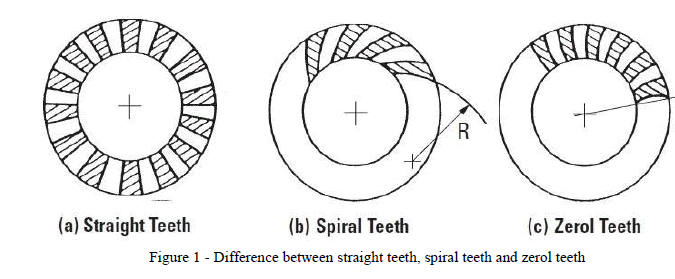 |
II. DESCRIPTION OF THE PROBLEM |
| The problem is the static application of a moment 600 Nm on the gear by pinion, pinion tries to rotate but hinged by the gear. The torque is transferred to the gear through contact face on tooth pair. The moment causes on these pair a contact force generated. Apart from this force, bending stress also generated at the root of the teeth. The aim of work is the evaluation of this bending stress generated at the root of teeth during the static application of the moment in straight teeth bevel gear, spiral bevel gear and zerol bevel gear. The analytical and numerical solution, compared to validate the model used for the finite element analysis. |
III. BENDING STRESS IN BEVEL GEAR |
| As per the AGMA the bending stress in bevel gear is calculated by the equation, and equation is as following. [1] [3] |
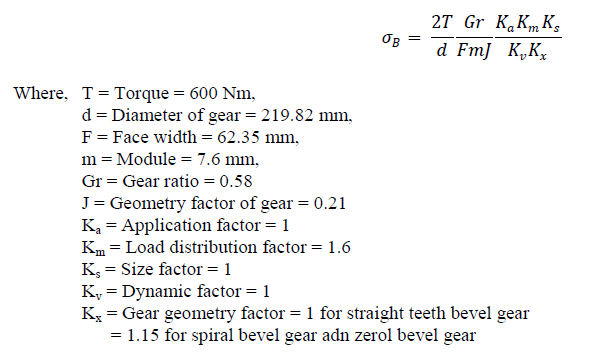 |
| For spiral bevel gear here take spiral angle is 35°, and zerol bevel gear is same as the spiral bevel gear but it is with the zero spiral angle. For straight teeth bevel gear, spiral bevel gear and zerol bevel gear all the other data is taken as same. |
IV. BENDING STRESS ANALYSIS USING ANSYS |
| For bending stress analysis, ANSYS Workbench 14.0 is used. For the modelling of the bevel gear PTC Creo is used. Applying a mesh is necessary thing for the analysis in ANSYS. For this project tetrahedron type element and size of element is 1 mm for all other faces and 0.5 mm for those areas where the stress concentration is high. The boundary condition and loading condition should be specified. For the analysis first apply the mesh in gear. It is not necessary to take whole gear set for the analysis, at the starting condition the load is applied on the gear teeth and the amount of load transfer from pinion to gear. At the starting condition the amount of torque is high than at the running condition the amount of torque is less. So for the analysis the only some part of the gear is taken.a |
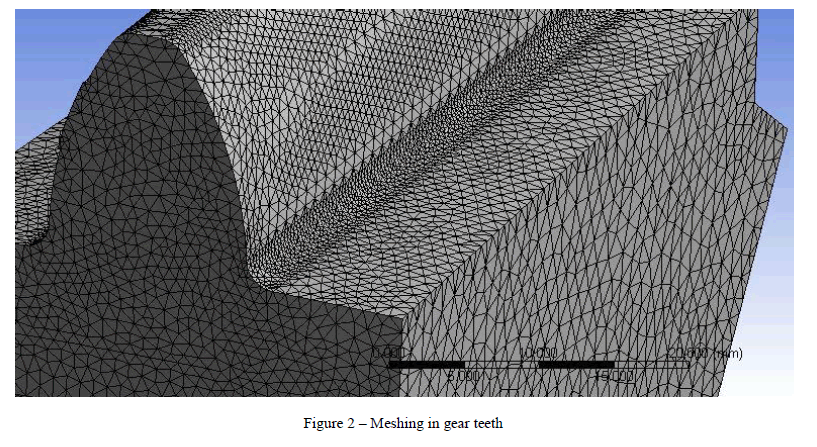 |
| After applying mesh in a gear teeth constrain and loading condition should be applied on the gear teeth. As per the above discussion here the only some part of gear is taken for the analysis, two of the surfaces are fixed in the reference of the gear teeth where the load is applied [4]. Here load is applied in the form of pressure. The amount of tangential load is applied on the some specific area of the gear teeth by the pinion. That area is defining as the contact region of the gear teeth and the pinion teeth. |
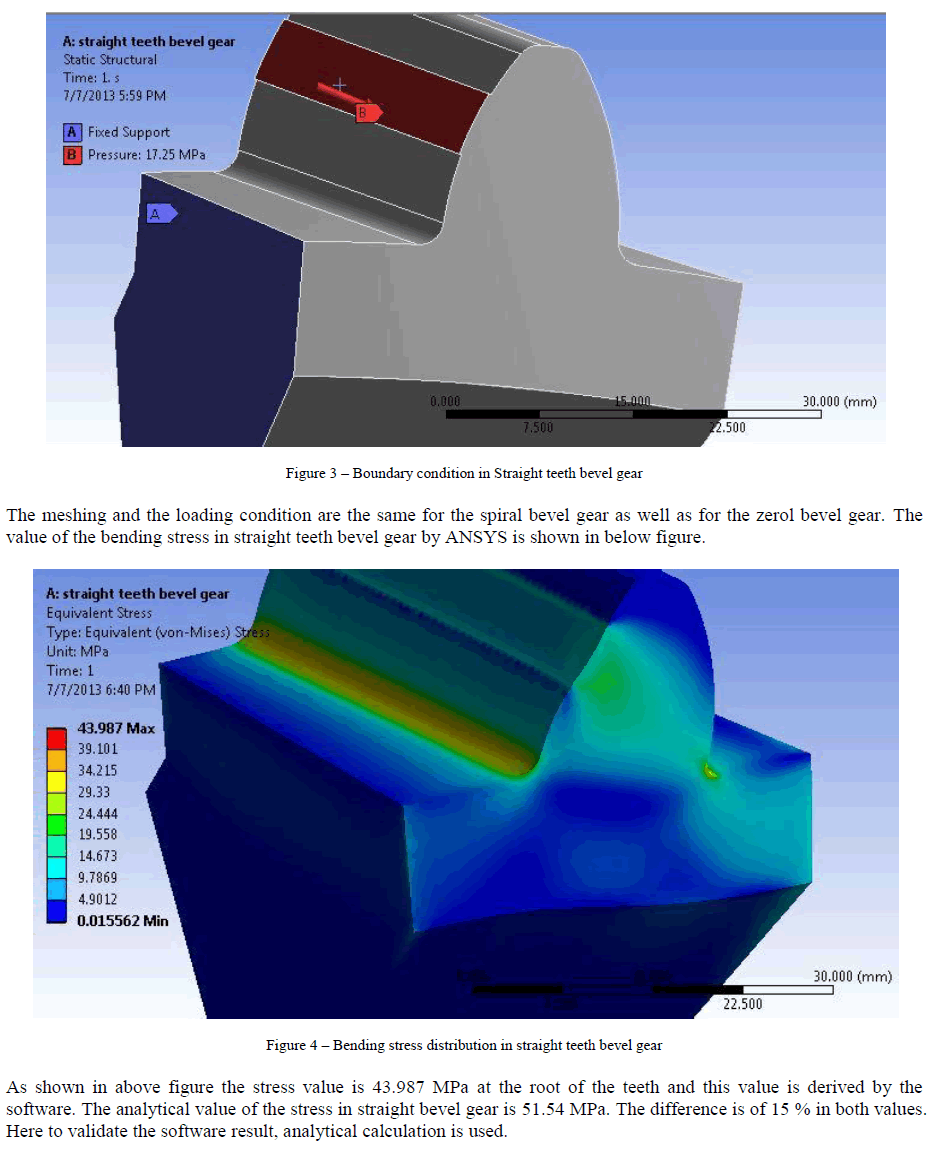 |
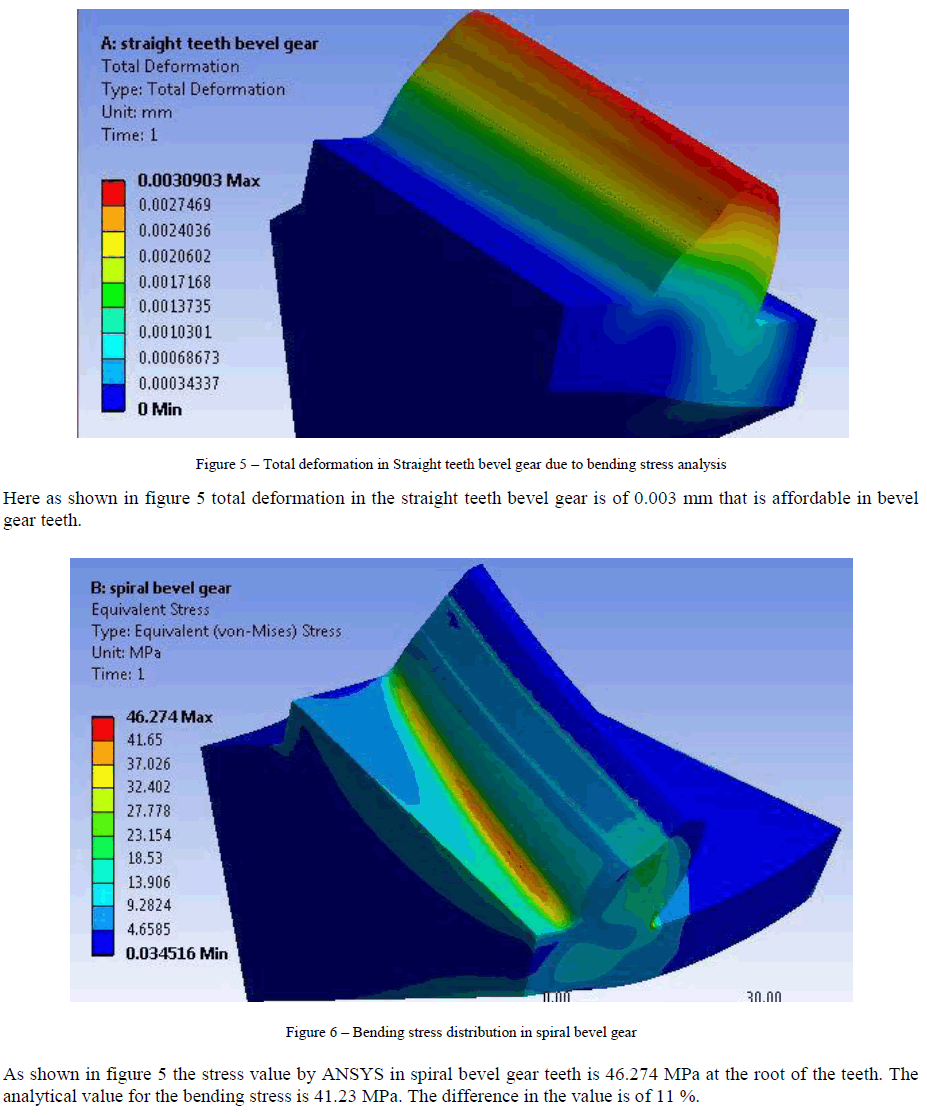 |
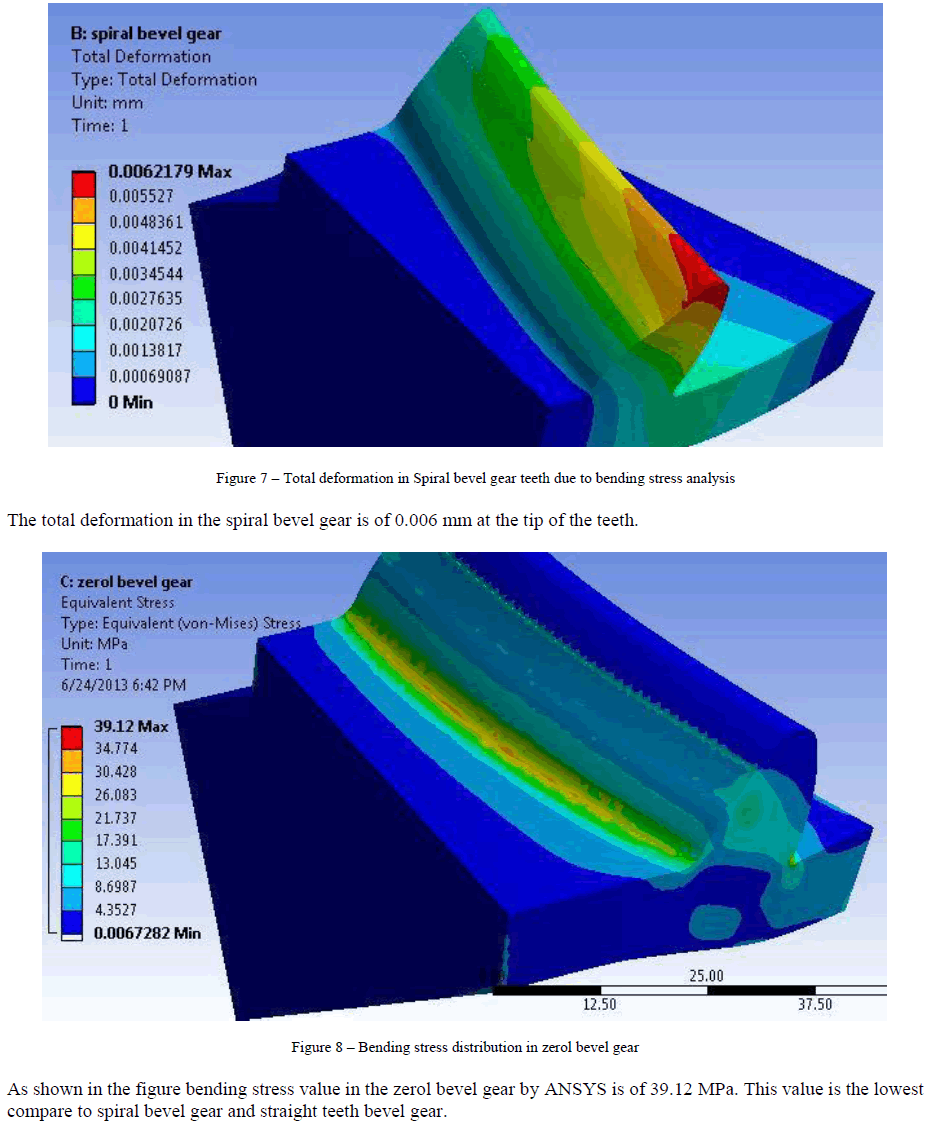 |
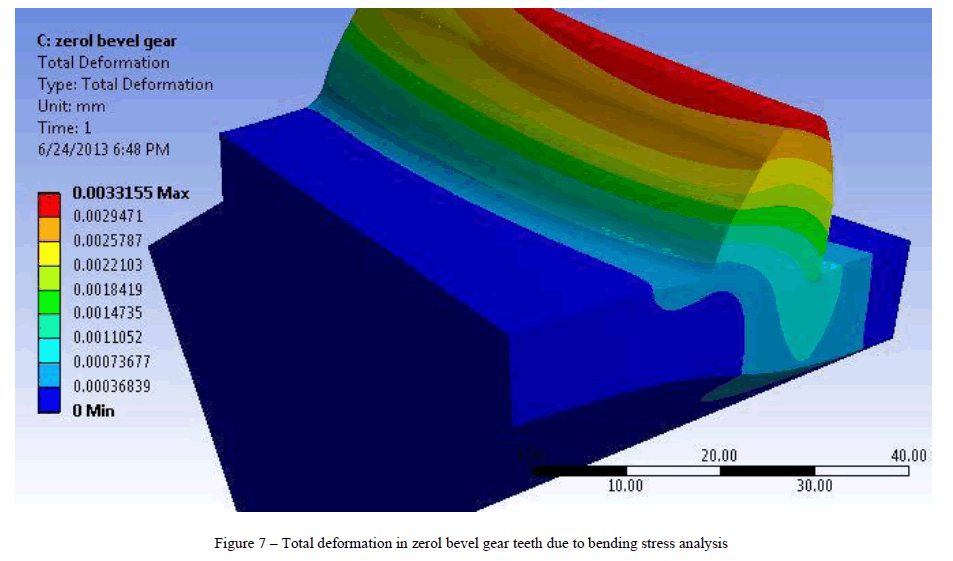 |
| The total deformation in zerol bevel gear is 0.003 mm at the tip of the teeth of the zerol bevel gear. |
V. CONCLUSION |
| The gearing is a very important in industrial field for power transmission. To choose high efficiency gear is very important. Here in this paper after doing the analytical calculation and analysis in ANSYS of straight teeth bevel gear, spiral bevel gear and zerol bevel gear, one conclude that the features of zerol bevel gear are good for the power transmission at higher speed and higher load. The zerol bevel gear has higher strength to resist the stress. Because of the curvature shape of the teeth load distribution is in two directional and continuously distribute the load in two directions, while in straight bevel gear load is applied in line form and at same time in full teeth. By this paper can recommend the zerol bevel gear for transmission of power at 90° instead the spiral bevel gear and straight teeth bevel gear because of the following resion. |
| Zerol bevel gear can be manufactured with same machine and by using same machine tool to manufacture spiral bevel gear. |
| Easy to manufacture compare to straight teeth bevel gear and spiral bevel gear. |
| Have a high strength to resist the stress. |
| Work without any noise at high speed because of its curvature surface pitting effect reduces. |
References |
|